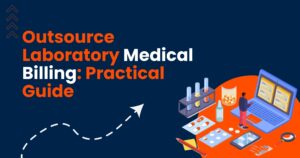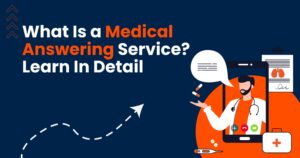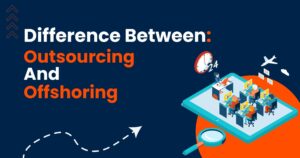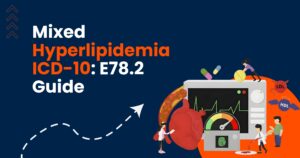Technology has transformed lives, aiming to replace legacy paperwork with digital record keeping by hospitals, clinics, doctors, and nursing facilities. In recent years, the U.S. federal government has invested huge fortune to fund the IT infrastructure and training programs necessary to boost the operational capacity of healthcare organizations.
With the integration of cloud in healthcare industry, EHR and EMR software have garnered healthcare organizations with robust accessibility to patient data and healthcare solutions with just a few taps. EHR and EMR are particularly designed to serve separate purposes. If your mind still holds a set of confusions related to key differences between the both, don’t fret. This article helps you dive into the intricacies of EHR vs EMR, their benefits and the integration of cloud solutions for healthcare to make an informed decision.
What is an EHR System in Healthcare?
Electronic Health Records (EHR) is a computerized software that embodies all the details about patients’ charts including the primary biodata of patients, ailment records, telemedicine, medical lab reports, and doctor’s prescriptions. EHR has a vast database that integrates clinical data from multiple sources such as hospitals, laboratories, pharmacies, and other health providers. If you want to know about EHR beyond clinical data, this software lets you pull it off. Let’s scroll down to get the full scoop.
- Authorized users can smoothly access the key data.
- Builds coordination among a wide range of providers.
- Spotlights a much wider perspective on patients’ condition in real-time.
- Allows medical professionals to reach out the critical information for well-versed decisions.
- Access to additional features such as population health management.
- EHR focuses on protecting patient data and enables seamless data transactions across multiple healthcare settings.
Statista report states that the global EHR market touched $29 billion in 2020 and is projected to hit beyond the milestone of $47 billion by 2027.
Understanding EMR in Healthcare Electronic Medical Records Explained
EMR refers to a single practice’s digital concept of a patient’s chart. This vast trove of digital data contains the medical histories of patients. Unlike legacy setup, EMR record maintenance capability is up to mark. Healthcare organizations have no fear of traditional setups messing with records. EMRs are designed to streamline operational tasks. Are you curious about more to come your way? The details are just a scroll away!
- EMR manages the storage, transfer and updating of patient details.
- Provides a detailed view of medical history, diagnosis, treatment plans, immunization dates, medications, and other related data.
- Healthcare organizations can smoothly access targeted data without any chance of error.
- Enhances communication among care teams and activates a hub for care-based interaction.
- The functionalities are normally limited to internal operations.
- Makes the healthcare facility ideal for practices with centralized patient care models.
Future Market Insights explains that global EMR value reached $17.6 billion in 2023 and is speculated to hit $32 billion by 2033, spiking at a CAGR of 6.2% during the projected period.
Top Components of EHR Software in Healthcare
There are various functional components of EHR for patient-centered care. All these components of EHR work together to build better patient engagement strategies. This eases your path to a seamless experience for the key healthcare stakeholders. Let’s break down the components that serve as the unsung heroes behind uninterrupted healthcare operations.
Clinical Component
It is all about equipping care teams with decision-support tools. Electronic documentation of patients’ interaction is easy including operative notes, medication prescriptions, nursing care plans and more.
Patient Management
It is all about patients’ updated data capturing, storage, and retrieval, including insurance details, demographics, emergency contact details, medical history and a unique medical record number using patient management systems.
Financial Panels
Integration of RCM functionalities for more revenue collection and higher financial performance. The easy-to-navigate dashboards provide accurate financial insights with comprehensive reports on clinical and financial metrics for informed decisions.
Secure Alerts and Messaging
Integration of secure messaging and alert solutions to streamline interaction between healthcare providers. Real-time alerts can facilitate timely intervention for improved outcomes.
Revenue Cycle and Management
RCM provides real-time information for well-informed financial decisions and sustainable patient care. It improves the financial performance of healthcare organizations.
Clinical Decision Support System (CDSS)
The right medical IoT (Internet of Things) provides better healthcare analytics. This error-free computer-based system integrates with the EHRs to generate medical recommendations based on patient data, research and clinical guidelines.
Patient Portal
Allows patients to reach their medical details and communication portals with providers. Facilitates patients to view lab results, imaging reports, appointment requests, bill payments and other relevant information.
Order Entry System (OES)
Facilitates electronic ordering of medications, tests and other patient-level services. This component connects with EHRs for custom orders and tracking of order status for efficient workflow efficiency.
Reporting System
Reports generation on patients’ data for various purposes is also a part of an EHR solution. It provides population health reports and quality improvement reports with regulatory compliance.
Benefits of EHR Software
Having smooth access to a patient’s medical record is helpful for healthcare professionals in a variety of ways. Let’s explore the list below.
- More coordination and collaboration
- Quality and advanced medical care
- Comprehensive view of patient’s record
- Higher integration with other systems
- Healthcare compliance standards (HIPAA, GDPR) for cloud data security
- Streamlined workflows with higher effectiveness
Top Components of EMR Software in Healthcare
EMR software has a wide range of functional components across healthcare settings, facilitating various aspects of remote patient monitoring and service provision.
Telemedicine Integration
Telemedicine is an integral part of the EMR system. This system is integrated with cloud-based healthcare platforms to seamlessly manage virtual care services. Proactive working of remote patient monitoring systems, remote consultations and care delivery are part of it.
Centralized Patient Record
EMR works as a central hub for patient medical records and consolidation of information from multiple sources including diagnostic tests, treatment strategies and medications.
Better Documentation
EMR systems allow the generation of electronic patient documents. These details include clinical notes, medical reports, and treatment strategies.
Data Sharing
This software ensures seamless data sharing among different healthcare facilities, allowing only authentic and authorized users to access it securely.
Appointment Scheduling
EMR systems are best at helping healthcare providers book appointments, view availability slots, and send regular reminders to patients.
New Patient Integration
It allows healthcare providers to streamline the integration process of onboarding patients. It automatically derives their medical history, demographic details, insurance and other data.
Regulatory Compliance
Strictly adhering to entities of HIPAA compliance, EMR systems assist healthcare organizations in fulfilling imperative regulatory requirements, and security and integrity guidelines.
Efficient Billing
The AI-powered cloud solutions efficiently integrate with EMR systems to automate coding and billing processes in real time. It facilitates revenue cycle management and administrative and other billing-related tasks.
Clinical Decision Support
EMR systems facilitate CDS features including evidence-based guidelines, small reminders and medical alerts to assist medical providers in making well-versed decisions.
Benefits of EMR Software
Here are some notable advantages of using EMR systems in the healthcare industry. Let’s break them down in a list.
- Effective prescription procedure
- Highly intuitive and user-friendly interface
- Free up more office space
- Robust data encryption and access controls
- Streamlined administrative processes
- Enhanced efficiency and outcome
- Tech-driven communication in real-time
EHR vs EMR | Explore the Key Differences
The aforementioned aspects about EHR and EMR spill the similar truth about their operational features, yet differences do exist to make an informed decision. Working on a legacy pattern can put your operational activities on dangerous ground. If you want to better understand how to turn the risk of a setback into a comeback, the key differences between EHR and EMR systems are jotted down here.
| # | EHR | EMR |
| Portability | EHR technology approves seamless transfer of a patient’s medical record to consultants and additional healthcare professionals. | EMR requires printing the patient’s medical records as they are tricky to transport outside of the medical facility. |
| Scope of Information | It maintains the digital record of all healthcare data across multiple settings such as medical history, medications, laboratory results and more. | It provides the digital version of a patient’s medical record specific to a single healthcare facility or practice, focusing on clinical information such as diagnosis, treatment plans and more. |
| Integration | This software is integrated with external systems such as pharmacies, labs, imaging centres and more. | It is more focused on internal integration with a single healthcare facility. It provides limited interoperability with external providers or systems. |
| Usability | This software is more accessed by doctors for diagnostic purposes, decision-making and patient care outside of the doctor’s office. | This system is efficiently utilized for diagnosis, treatment and care within a certain medical provider’s office. |
| Interoperability | This system is originally built with higher interoperability in mind. It ensures seamless information exchange between various healthcare providers and systems. | It comes with limited interoperability and an independent functional approach within a single healthcare facility. |
| Data Sharing | It ensures comprehensive information sharing across multiple healthcare settings. It allows better medical care coordination and patient management. | It typically limits data sharing to a single medical facility. This feature makes it less effective care coordination across multiple service providers. |
Overview of Healthcare Cloud Technology
Cloud computing or the use of healthcare cloud applications refers to the use of secure and scalable cloud infrastructure for effective data management. Whether you opt for AI-powered cloud solutions or lean on other cloud solutions healthcare, some of the benefits of cloud storage for healthcare data are listed below.
- Scalable cloud computing
- Higher accessibility with reduced operational complexities
- Reduces the cost with higher data access to patients
- Enhanced transparency and personalized treatment
- Automates the backend medical operations
- Higher interoperability in cloud systems
The Healthcare Cloud Computing Market report submits that cloud in healthcare is estimated to hit a value of over $89 billion by 2027. The use of effective cloud solutions healthcare serves as the army of invisible life-saving machines vital to the hospital workflows.
Applications of Cloud Technology in Health Industry
Whether you choose to experience public, private or hybrid cloud infrastructure, the applications of cloud services are available in abundance. The role of secure cloud hosting for healthcare goes beyond reducing operational downtime. Some others are highlighted below.
- Disaster Recovery as a Service (DRaaS) for healthcare data backup in case of any pitfall
- Data-driven healthcare diagnostics and AI
- Telemedicine and healthcare remote monitoring
- EHR management for patient’s record
According to an analysis, almost 47% of sensitive healthcare data has been migrated to cloud platforms. Nearly 70% of healthcare facilities have shifted to cloud computing by 2023.
What is Healthcare SaaS?
SaaS (Software as a Service) solution is an effective business model for the distribution of applications as a service to the targeted users over the Internet. Instead of downloading or actively managing the software, the internet is a medium to access it. Healthcare SaaS refers to cloud-based software apps significantly designed for healthcare facilities. Let’s explore it more.
- Healthcare providers use SaaS for enhanced cloud-based EHRs
- Cost-effective solution with proactive practice management systems
- Ensures scalable administrative operations
- Higher revenue cycle management
- Supply chain management
- Ensures delivery of precision medicine
This sporadically evolving healthcare landscape demands a robust transfer from paperwork to digital solutions. Despite various challenges in value-based healthcare, EHR and EMR stand at the forefront of this digital transformation with distinct features, functionalities, and benefits.
Experienced and dependable healthcare IT outsourcing services provide tailored software solutions while adhering to all the regulations of the healthcare sector. Are you ready to step into an advanced, dynamic, and fast-paced healthcare industry?





